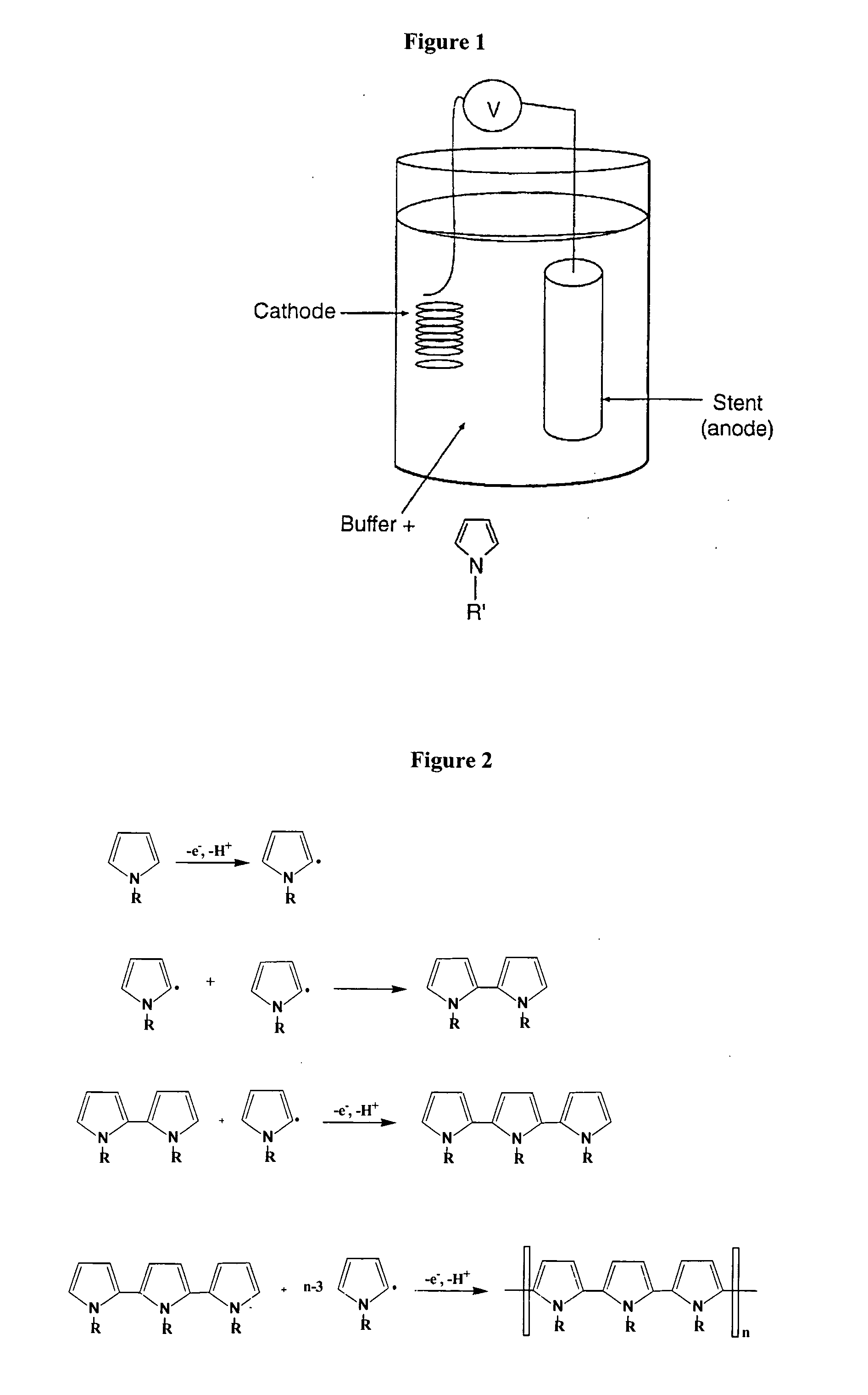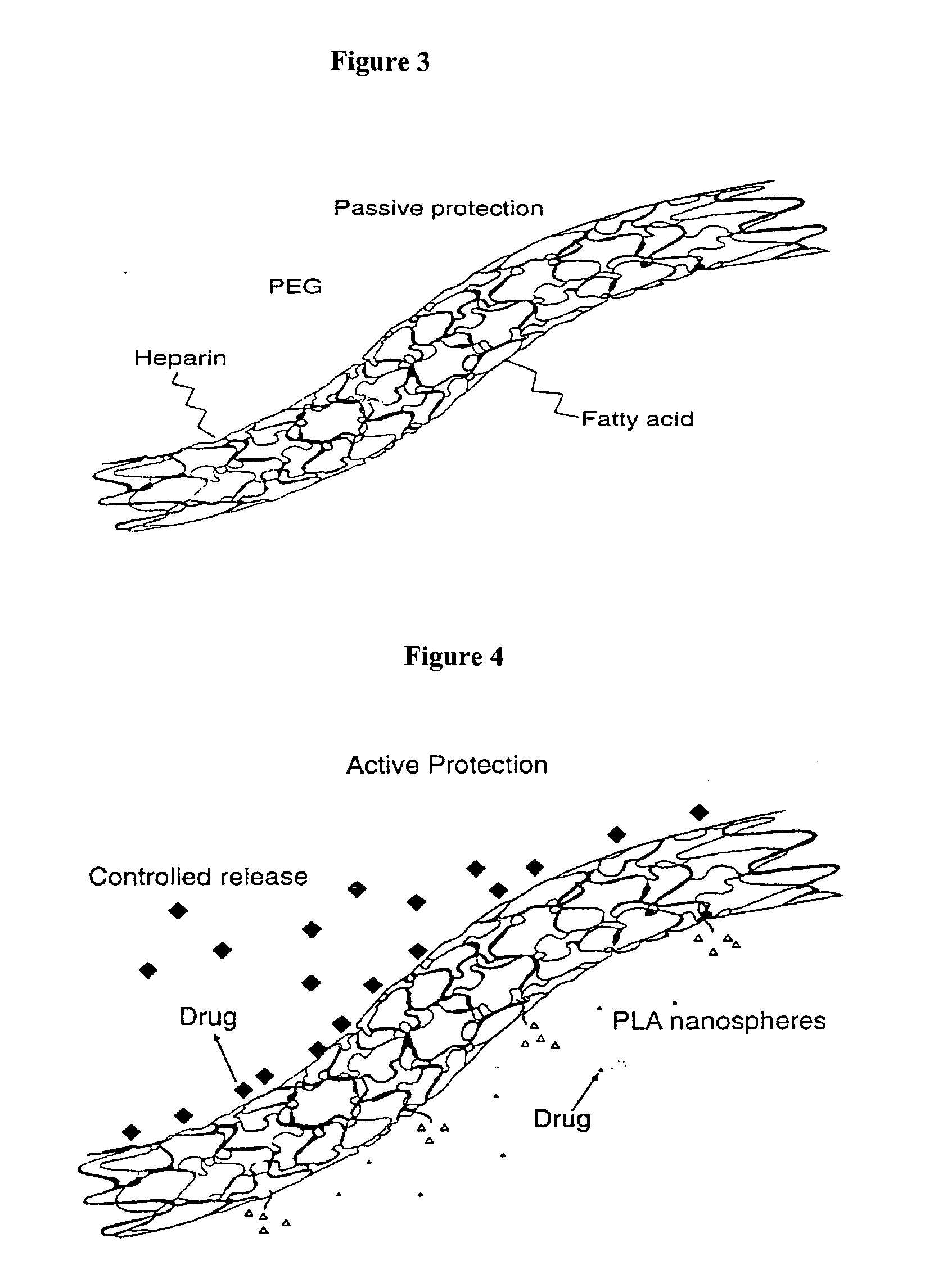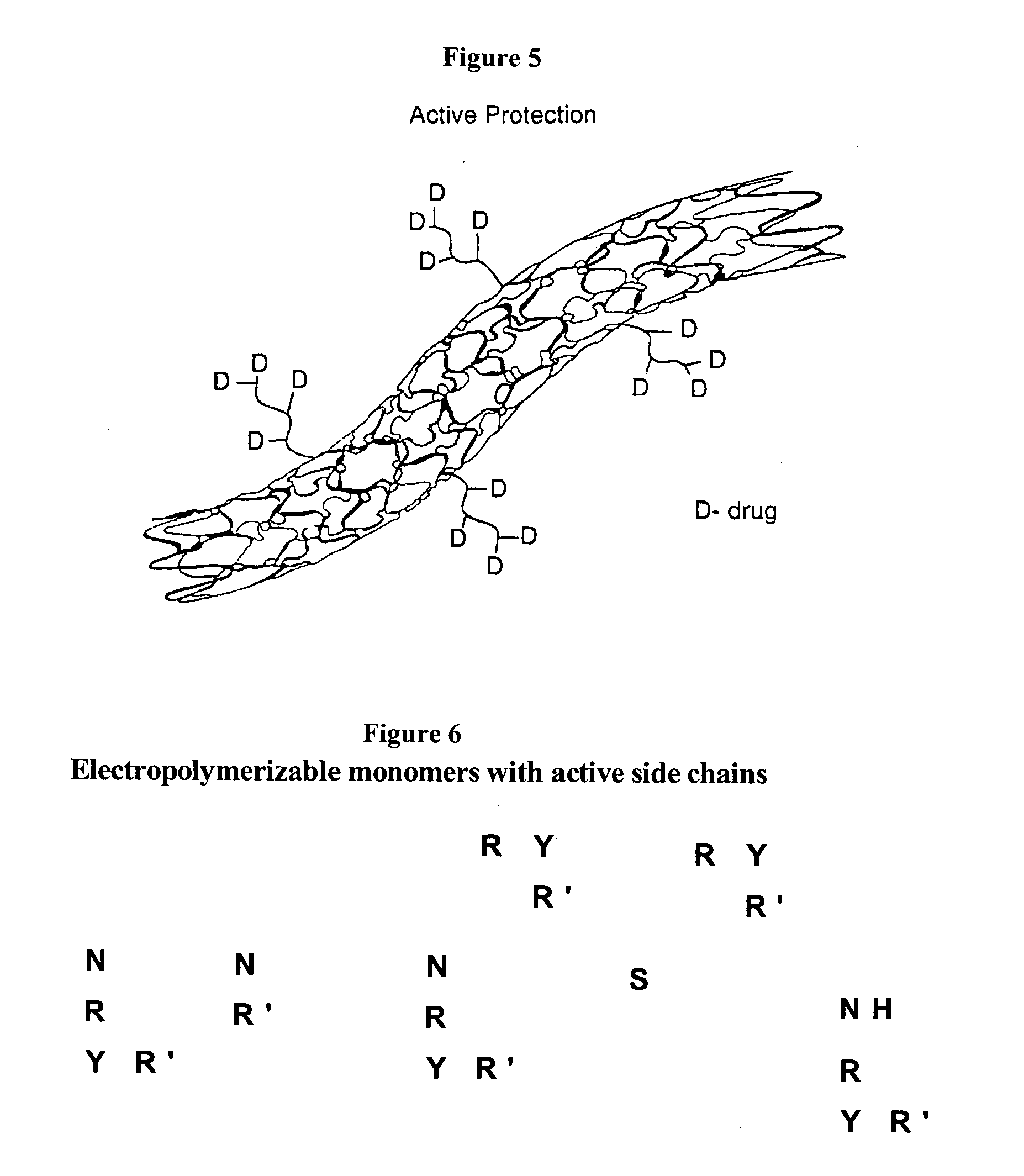Electropolymerizable monomers and polymeric coatings on implantable devices prepared therefrom
a technology which is applied in the field of electrolymerizable monomers and polymeric coatings on implantable devices prepared therefrom, can solve the problems of implant failure, adversely affecting the biocompatibility of implantable metal structures, and medically harmful implant failures
- Summary
- Abstract
- Description
- Claims
- Application Information
AI Technical Summary
Benefits of technology
Problems solved by technology
Method used
Image
Examples
example 1
Preparation of Pyrrole Derivatives
[0281] The following describes the preparation of a variety of electropolymerizable pyrrole monomers, derivatized by functional groups, which are suitable for use in the context of the present invention.
[0282] Preparation of Carboxylic Acid or Amino Containing Pyrrole Derivatives-General Procedure:
[0283] The preparation of carboxylic acid or amino containing pyrrole analogues was conducted based on known protocols by Yon-Hin et al, [Anal. Chem. 1993, 65, 2067-2071], unless otherwise indicated.
[0284] Preparation of N-(3-aminopropyl)-pyrrole (APP)—Route A: N-(2-cyanoethyl)pyrrole was reduced with LiAlH4 in dry diethyl ether, using the general procedure described above, using N-(2-cyanoethyl)pyrrole (available from Aldrich Chemicals) as starting material. N-(3-aminopropyl)-pyrrole was synthesized by reduction of N-(2-cyanoethyl)pyrrole with LiAlH4 in dry diethyl ether in a 90% yield and was identified by H-NMR and IR (data not shown).
[0285] Prepar...
example 2
Preparation of Nanoparticles
[0353] Various methods have been described in the literature for the formulation of nano- and microparticles having hydrophilic surface such as PEG chain or polysaccharide chains on the surface (see, for example, R. Gref, et al., Poly(ethylene glycol) coated nanospheres, Advanced Drug Delivery Reviews, 16: 215-233, 1995).
[0354] In a preferred method, hydrophilic-hydrophobic molecules having functional groups as part of the hydrophilic side are prepared, such that when the molecule is used for the preparation of particles in a mixture of organic-aqueous solvents, the hydrophilic side chain will remain on the surface towards the aqueous medium. For example, PLA-PEG block copolymer having amino groups on the PEG end chain, can be formulated into particles by a solvent evaporation method using PLA and optionally drug solution in an organic solvent dispersed in aqueous solution, to thereby form particles with PEG chains onto the particle surface that have am...
example 3
Electropolymerization
[0357] Pre-Treatment of Stainless Steel (SS) Surfaces:
[0358] SS surfaces were pre-treated prior to electropolymerization thereon, in order to improve their surface properties and provide a better adherence of the polymer thereto.
[0359] The adhesion factor on SS plates was measured with cross-cut adhesive tape following D-3359-02 ASTM standard test for SS.
[0360] New pre-treatment procedures were developed, and are presented in Table 1 below
TABLE 1SubstratePretreatmentSS 316Manual polish using 4,000 grit sand paper, until shines,platesrinse in acetonitrile.SS 316LVMDip in 40% HNO3 for 10 minutes at room temperature,platesrinse with DDW, sonication in DDW and then in acetonefor 10 minutes each.SS 316LVMDip in 40% HNO3 for 10 minutes at room temperature,stentsrinse with DDW, sonication in DDW and then in acetonefor 10 minutes each.Sonicate or shake for 15-40 minutes in acetonitrile orethanol with Carborundum, mesh size 220-1000, ormixtures of. The temperature ...
PUM
| Property | Measurement | Unit |
|---|---|---|
| Length | aaaaa | aaaaa |
| Length | aaaaa | aaaaa |
| Thickness | aaaaa | aaaaa |
Abstract
Description
Claims
Application Information
 Login to View More
Login to View More - R&D
- Intellectual Property
- Life Sciences
- Materials
- Tech Scout
- Unparalleled Data Quality
- Higher Quality Content
- 60% Fewer Hallucinations
Browse by: Latest US Patents, China's latest patents, Technical Efficacy Thesaurus, Application Domain, Technology Topic, Popular Technical Reports.
© 2025 PatSnap. All rights reserved.Legal|Privacy policy|Modern Slavery Act Transparency Statement|Sitemap|About US| Contact US: help@patsnap.com



